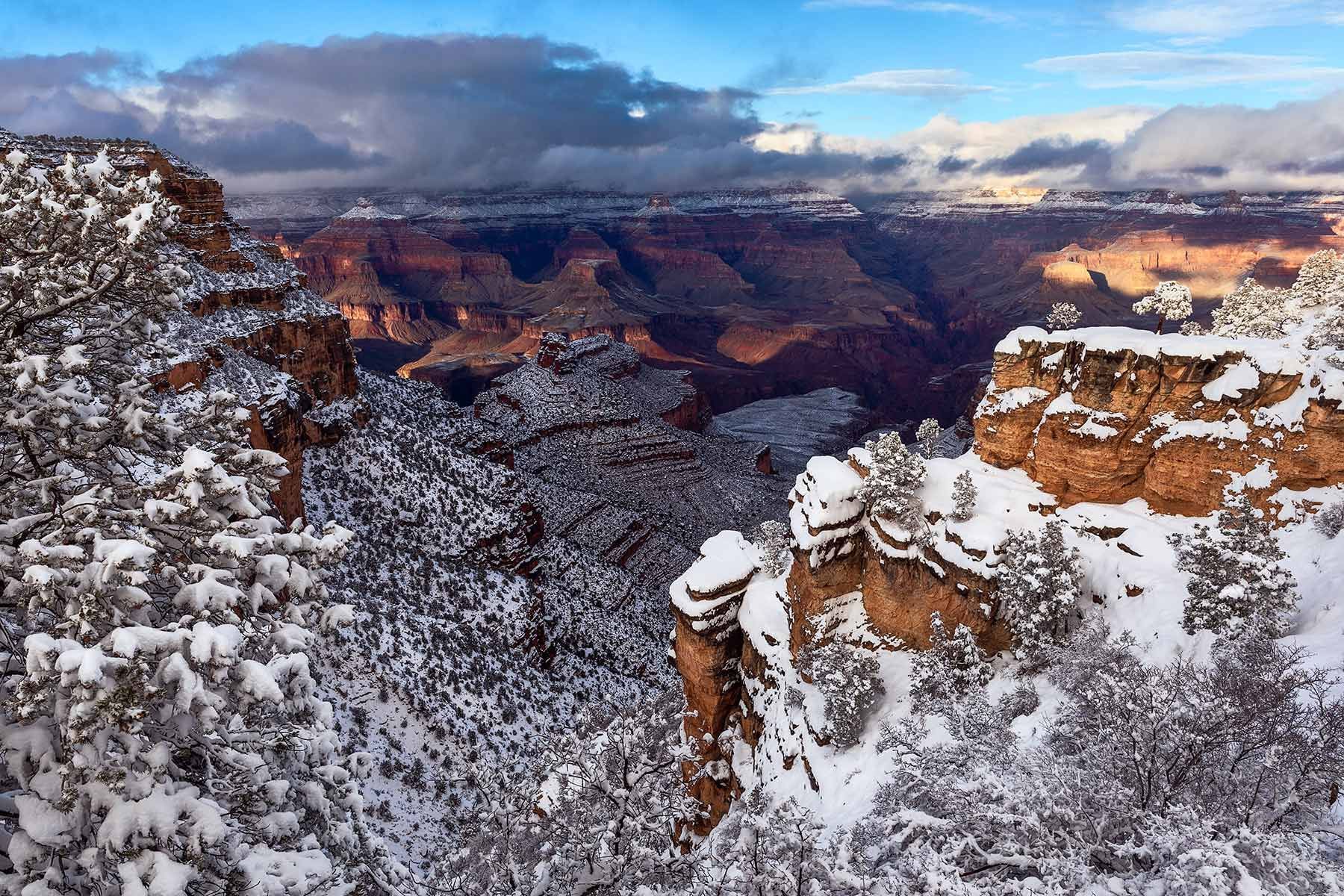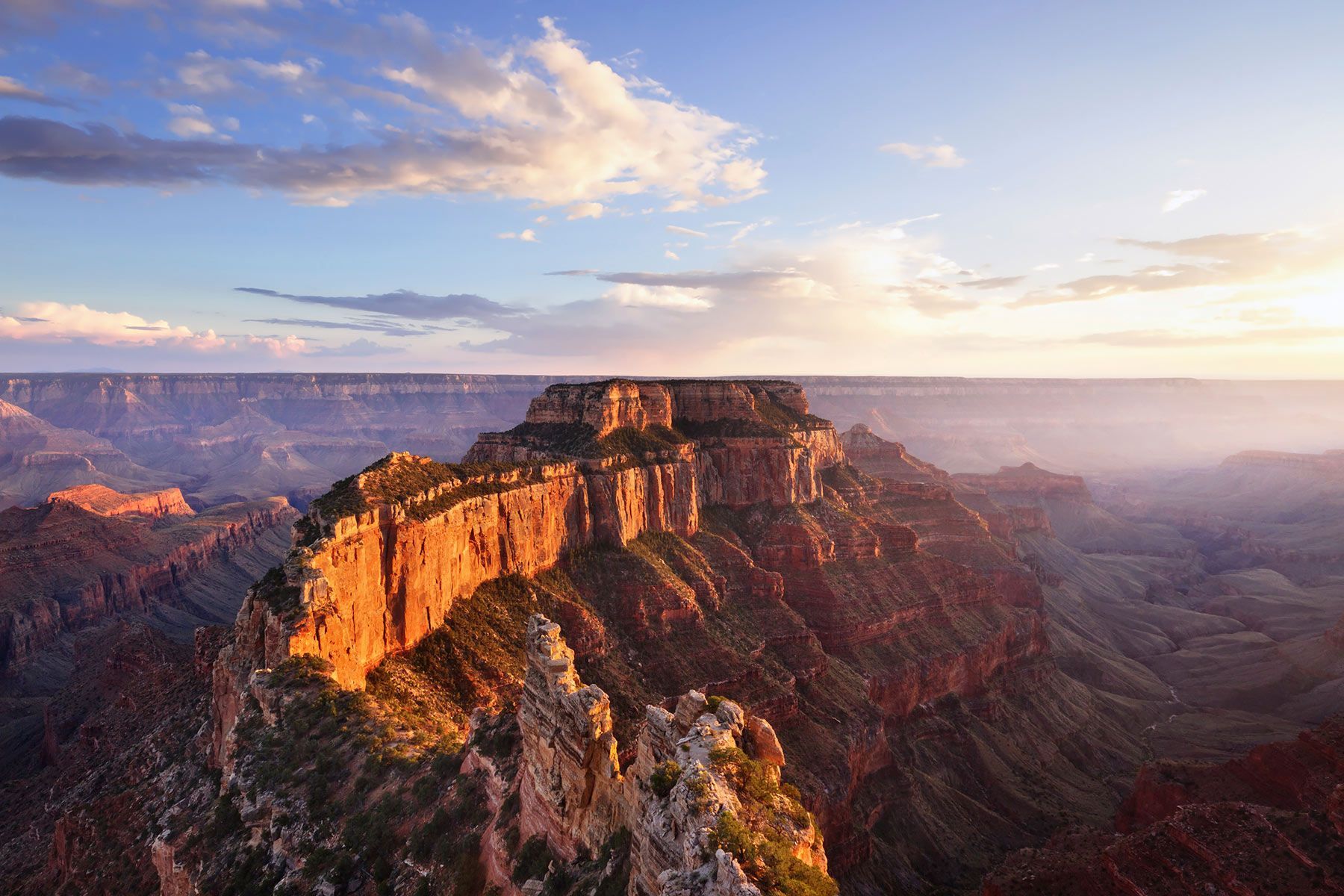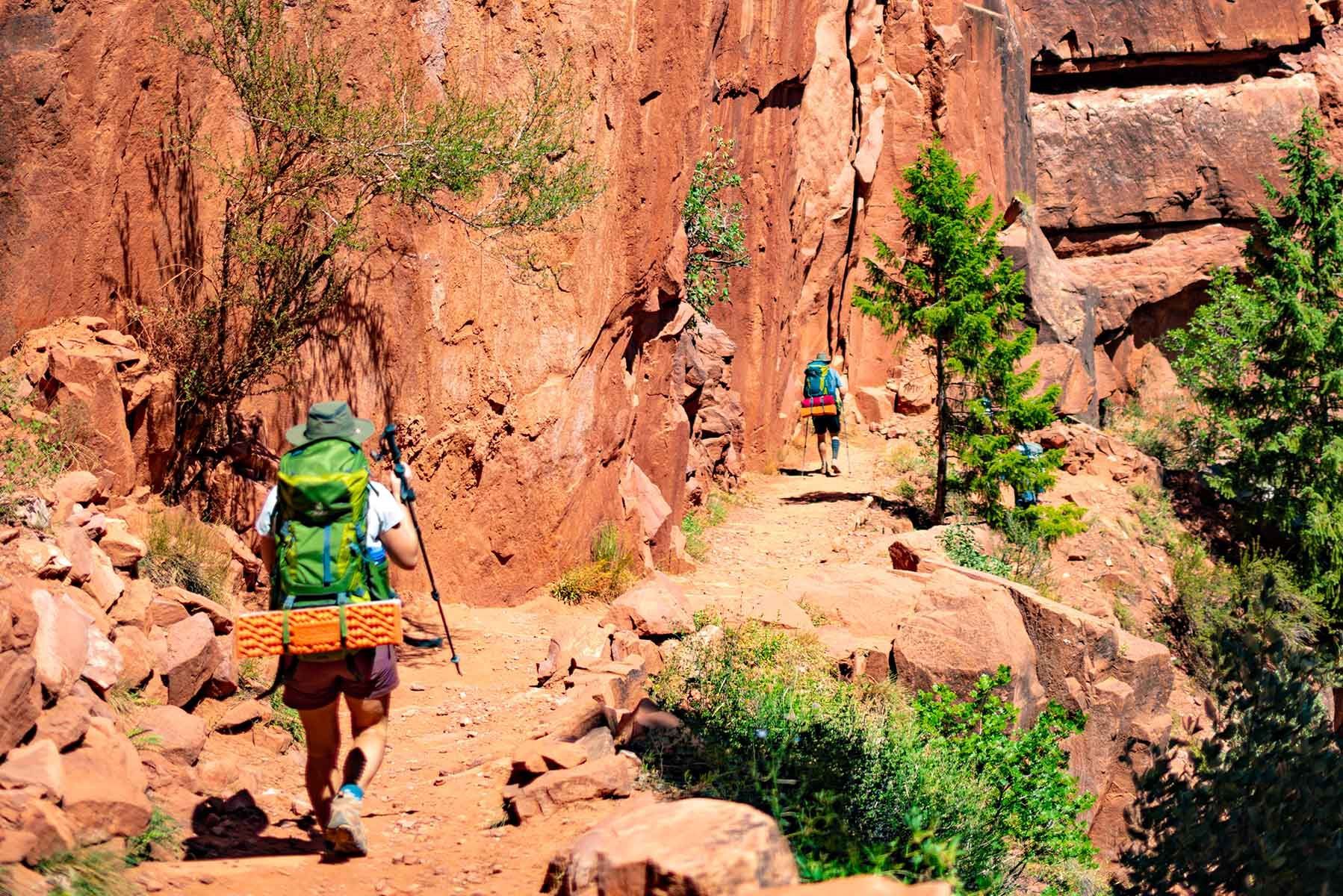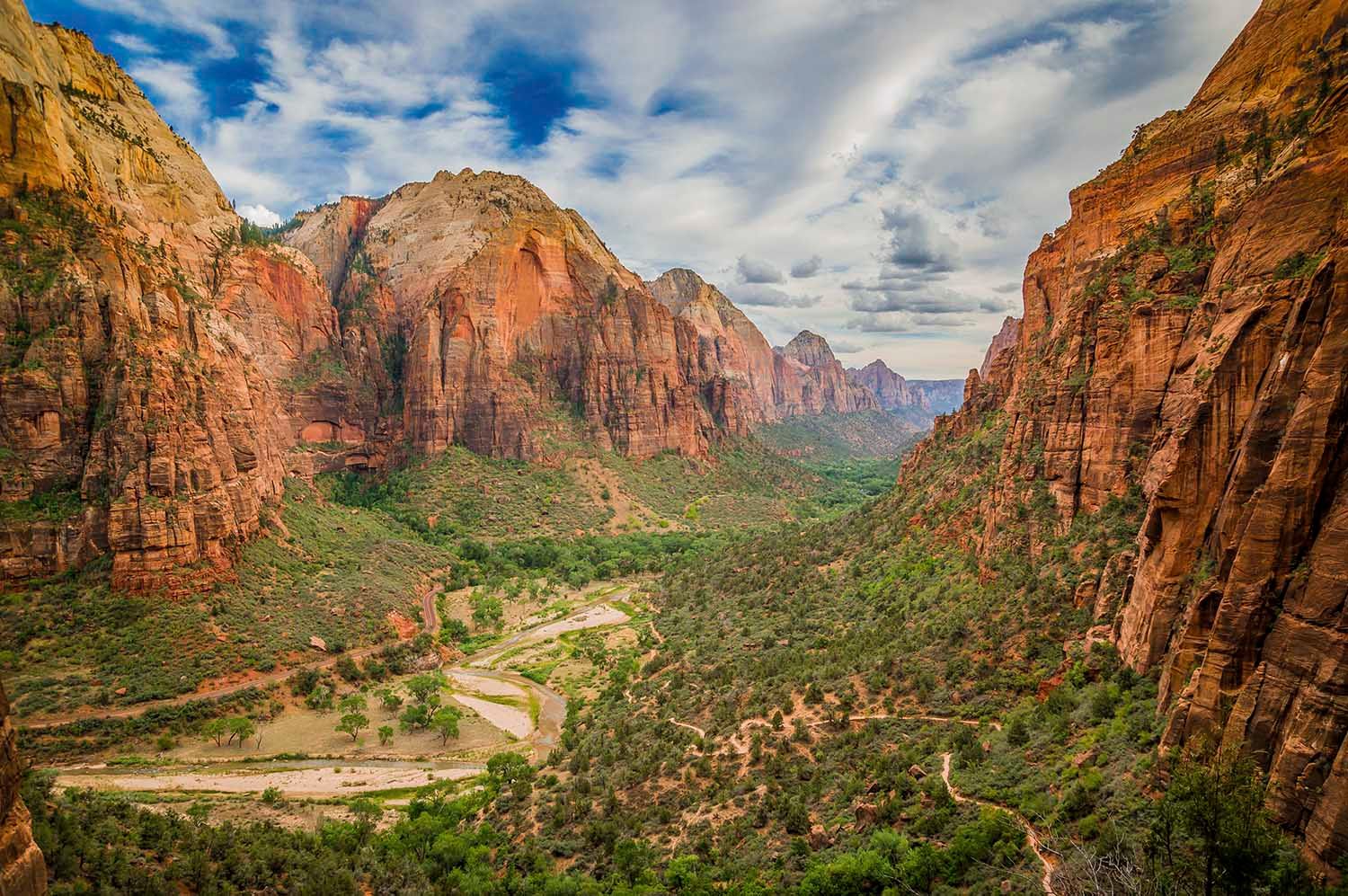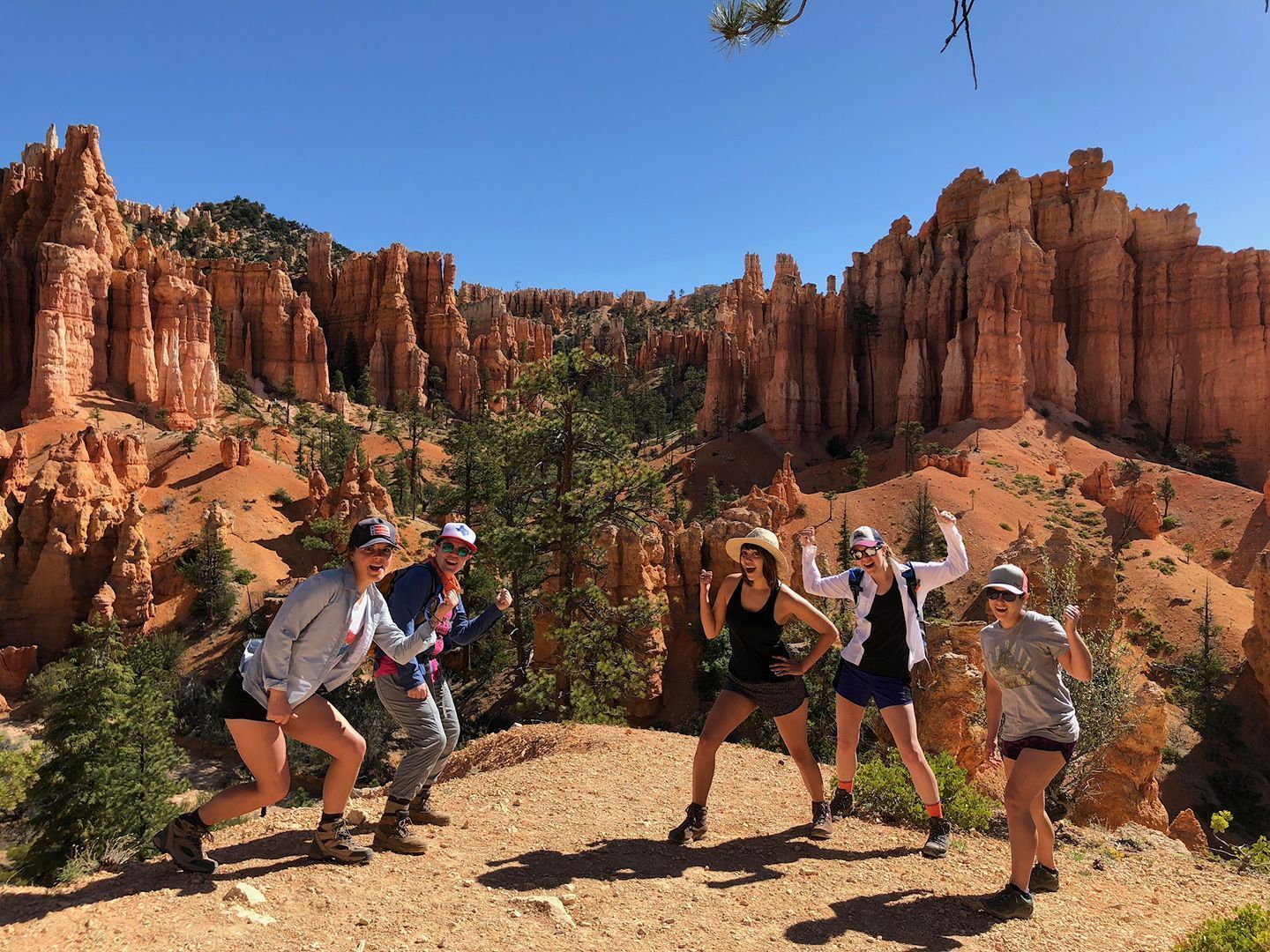Camping in Grand Canyon
Key Takeaways
- Plan and reserve early — Grand Canyon camping spots, both on the South and North Rims, require reservations months in advance due to high demand.
- Backcountry permits are competitive — Only a limited number of camping permits are issued each year through a lottery system, making early planning essential.
- Guided trips simplify logistics — Choosing a guided Grand Canyon camping or backpacking trip eliminates the hassle of permits, campsite selection, and meal prep.
- Three main campgrounds below the rim — Bright Angel, Indian Garden, and Cottonwood Campgrounds offer unique experiences for South and North Rim hikers.
- Safety and sustainability matter — Expert guides ensure your adventure stays safe, well-paced, and environmentally responsible while you focus on the experience.
How does camping at Grand Canyon sound, tucking in for the night under fragrant ponderosa pines at the edge of America’s greatest wonder? Pretty fantastic, right? That’s why reservations six months in advance are required for the National Park Service campgrounds at the South Rim and the North Rim. Some are booked solid one year ahead of time.
Reservations, in the form of backcountry permits, are also required to camp beneath the rim of Grand Canyon. In 2017, some 13,000 permits for 40,000 hikers were issued with many, many more stranded on a waiting list. It is not unusual for the park service to receive upwards of 50,000 permit requests in a year. These permits become available only 4 months in advance of your intended visit, via a highly competitive lottery system.
One of the best ways to avoid the bureaucratic hassle of pitching a tent in the Grand Canyon is with a commercial guide. Whether you are signing up for a backpacking trip or a basecamp trip along the rims, you will be guaranteed a spot in nature’s grandest bedroom.
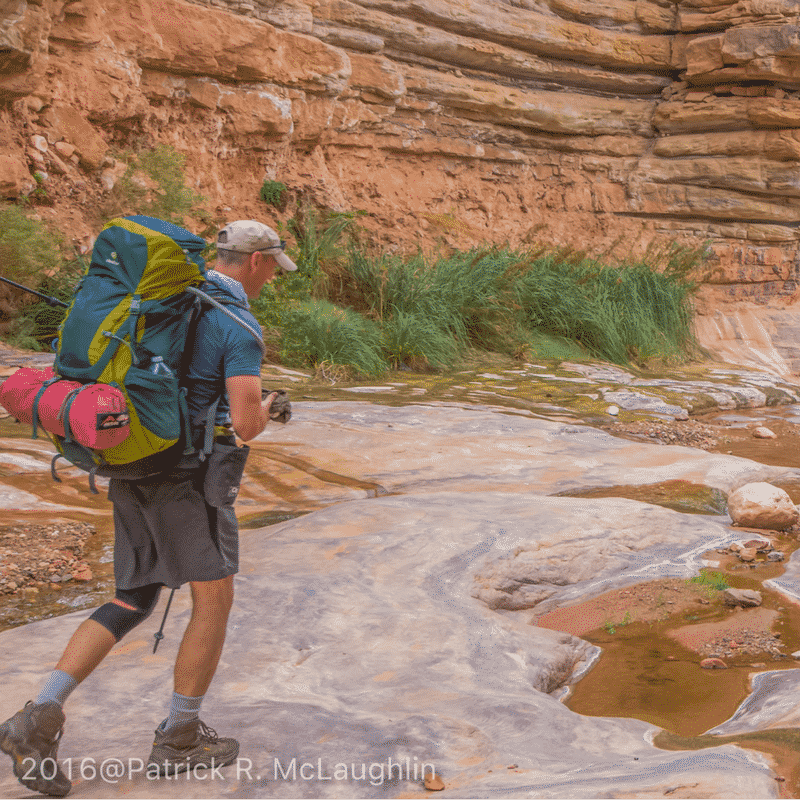
There are three established campgrounds below the rim. The Bright Angel Campground, with drinking water and flush toilets, is the only site on the canyon floor. The Indian Garden Campground welcomes campers coming down from the South Rim and the Cottonwood Campground is a happy sight for hikers coming down the North Kaibab Trail from the North Rim. Beyond that, guides know the best backcountry spots to bed down for the night in the expansive Grand Canyon backcountry.
Many hikers and campers like to enhance the discovery of adventure travel with a minimum of planning. Camping in the Grand Canyon is not one of those trips to go light on organization. A guided trip will not only remove all the logistics of camping but details like optimum departure times and pace of travel – factors that can ruin a Grand Canyon odyssey due to extreme conditions – are accounted for.
Of course, a guided backpacking trip will take care of establishing the ideal campsite for the conditions… no worrying about equipment, meal preparation, and route-finding. Guides will also ensure that your trip minimizes the impact on the fragile canyon environment. All that’s left is to relax and experience the wonder of the sun rising from the floor of the Grand Canyon
Frequently Asked Questions
Camping in the Grand Canyon offers unforgettable views, but planning ahead is essential due to permit requirements, limited sites, and varying rim conditions. Here are key questions and answers to help you prepare.
Can I camp anywhere in the Grand Canyon?
No. Camping is only allowed in designated campgrounds or backcountry sites with a valid permit. Developed campgrounds like Mather, Desert View, and North Rim are managed by the National Park Service, while below-rim camping requires a backcountry permit. Random or dispersed camping inside the park is prohibited.
How do I get a camping permit for the Grand Canyon?
To camp below the rim, apply for a backcountry permit up to four months in advance through the National Park Service’s online system. Permits are highly competitive, often allocated via lottery. Guided trips automatically include required permits, simplifying logistics and ensuring compliance with park regulations.
How much does it cost to camp in the Grand Canyon?
As of 2025, standard tent or RV sites at Mather, Desert View, and North Rim Campgrounds cost around $30 per night. Group sites are $55, while Senior and Access passholders receive a 50% discount. Fees support facility upgrades and visitor services across the park.
Which Grand Canyon campground is best?
Each campground offers something unique. Mather Campground is central and family-friendly on the South Rim. Desert View offers quieter, scenic sites near panoramic overlooks. The North Rim Campground is smaller and more secluded, appealing to campers seeking solitude and cooler temperatures.
What is the “200-foot rule” for camping?
This regulation means you cannot camp within 200 feet of trails, water sources, or archaeological sites unless it’s a designated campsite. The rule protects fragile desert ecosystems and ensures sustainable backcountry camping practices. Always follow Leave No Trace principles when choosing a site.
Is it better to camp on the North Rim or South Rim?
The South Rim is open year-round, offers more amenities, and is easier to access. The North Rim, open seasonally from mid-May to mid-October, is quieter with fewer crowds and cooler temperatures. The choice depends on your desired experience—convenience or solitude.
How far in advance should I reserve a campsite?
Reserve your spot at least six months in advance for South or North Rim campgrounds. Backcountry permits become available four months ahead, and they’re in high demand. Booking early through Recreation.gov or planning a guided trip ensures you secure your preferred dates.
What amenities are available at Grand Canyon campgrounds?
Most developed campgrounds offer picnic tables, fire rings, restrooms, and drinking water. Mather Campground has flush toilets and nearby stores, while Desert View offers basic facilities. Bright Angel Campground on the canyon floor provides potable water and restrooms for backcountry hikers.
Can I camp at the bottom of the Grand Canyon?
Yes, but only with a backcountry permit. Bright Angel Campground near Phantom Ranch is the only established site on the canyon floor. It’s accessible via the Bright Angel or South Kaibab Trails and offers a rare opportunity to experience sunrise from the canyon’s base.
Are guided camping trips worth it?
Absolutely. Guided trips handle all permits, gear, meals, and safety logistics. They’re ideal for first-time canyon campers or those who prefer to focus on hiking and scenery. Guides also ensure minimal environmental impact and optimal pacing for the extreme conditions.
Four Season Guides, 506 N Grant St suite o, Flagstaff, AZ 86004, United States
+19285251552
35.19653980, -111.62000560

